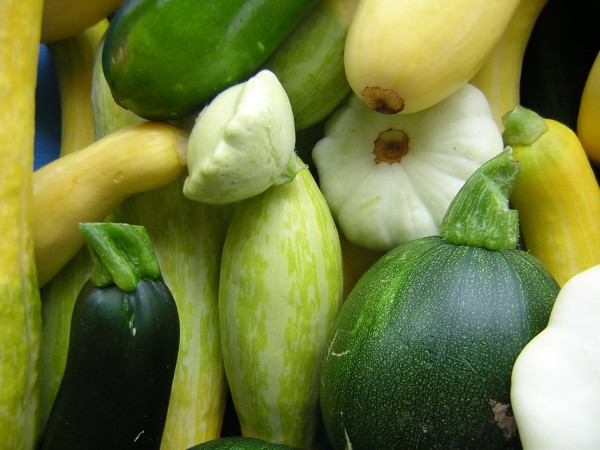Many gardeners can boast good yields of zucchini. And indeed, the agrotechnology of the vegetable is simple. Meanwhile, there are many diseases that affect the plant. Why we should not ignore the external signs and what to do for the timely treatment of a disease, we now analyze in detail.
Table of contents
The most common diseases of zucchini
Every crop in the garden has its enemies that can destroy the entire crop. If you find characteristic symptoms, you should immediately treat, and in some cases remove the diseased plant from the garden to localize the problem.
Squashes are considered to be a moisture-loving crop, and when watering the beds in hot weather, a favorable background is created for the development of pathogenic bacteria and microorganisms. Almost all fungal infections are activated precisely in heat and humidity. The main carrier of the dispute can be soil or seeds, so before planting, disinfection of the environment and seeds is carried out.
Experienced gardeners regularly inspect plants to quickly identify diseases or pests in order to quickly respond to the problem. Locate the affected areas of plants in this case is much easier.
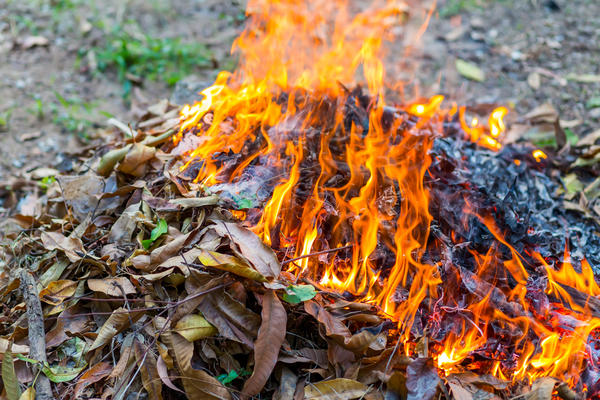
Create favorable conditions for the development of harmful microorganisms and weeds. On clean beds, spores are harder to spread than on thickened areas, where a moist environment is constantly maintained. During the growing season zucchini spend 3-4 weeding, which combine with the loosening of the soil. Such procedures are a good prevention from diseases.
Anthracnose
The danger of the disease lies in the affected area, which extends to all organs of the plant, except for the roots. A characteristic sign is yellow-brown spots on the leaves, in other places the spots are depressed, covered with a pink bloom. If spotting is seen on the root area, then the squash will not be able to survive.
The fight against the disease consists in the careful selection of seedlings, the removal of affected specimens from the garden bed, the timely harvesting of weeds. So that the spores of the disease do not pose a threat to the future harvest, in the fall, all plant residues should be well removed from the site and the land should be dug closer to frost.
When detecting the first signs of a vermin, it is recommended to spray one of the solutions:
- colloidal sulfur (50-60 gr. per bucket of water);
- Bordeaux mixture (copper sulphate and lime 100 g. per 10 liters of water).
When growing crops in greenhouses, disinfection of surfaces should be carried out in autumn and spring. Disinfection involves the use of bleach (200 grams) per 10 liters of water.
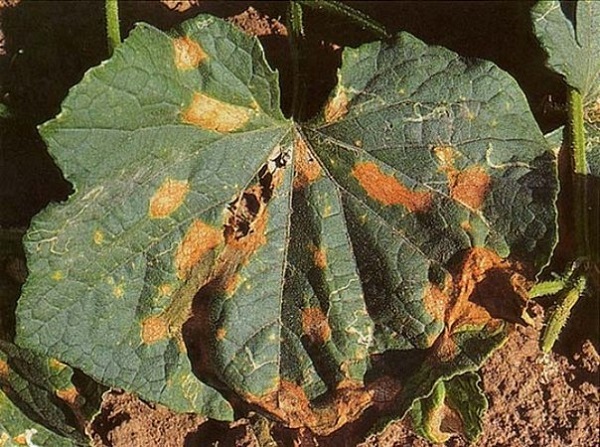
Ascohitosis
The fungal disease affects all above-ground parts of the shoot, characterized by the formation of black spots on the leaves and stalks (pycnidia of fungi). Ascochitis develops quickly, with a late diagnosis, the plant cannot be saved. The reason for the defeat of the culture can be disputes that have survived from the last season in the soil, or overmoistened soil.
If you find the first signs, it is recommended to powder the affected area with a mixture of copper sulfate and chalk (1: 1). Powdered activated carbon can also be added to the powder. This is done to dry the fabric and localize the problem.

Bacteriosis or angular leaf spot
The disease is dangerous because it affects not only parts of the plant, but also fruit. Small brown sores are formed on cotyledons, the spots on the leaves have an angular shape.Fruits on such bushes are formed with curvatures and deformations of different nature. At the initial stage of the disease in the morning, the spots become dark green in color, gradually turning into brown. A sharp change in temperature conditions provokes the rapid development of the disease, so it is not worth delaying the treatment.
The fight against bacteriosis includes:
- disinfection of seeds before sowing;
- annual change of place of landing of culture;
- removal of the affected plant from the bed, followed by disposal;
- in order to prevent the bushes sprayed Bordeaux mixture.
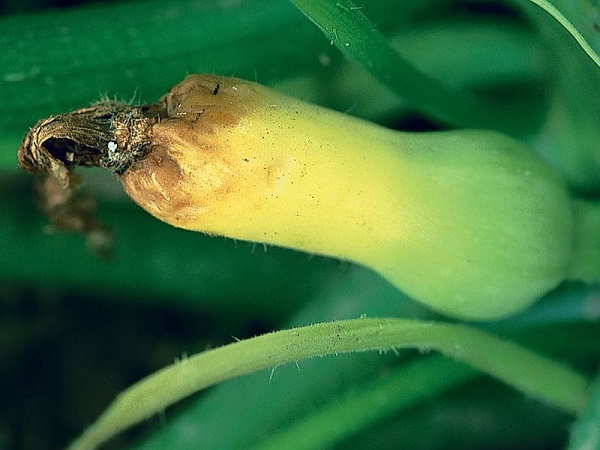
Vertex bacteriosis
Another type of fungal infection that affects the pistils and ovaries of flowers, resulting in rotting, accompanied by an unpleasant putrid odor. It is easy to identify the problem - on the stems or fruits, yellow, then brown wet spots, turning into a brown color, are first formed.
When the first signs are found in plants, damaged areas are removed or the bush is pulled from the whole bed to prevent the infection from spreading. It is possible to fight the disease successfully preventive measureswhich include moderate watering, cleaning the garden from weeds, disinfecting seeds and soil, respecting crop rotation.
Dry apical rot
The disease is caused by a lack of calcium in the soil. It is characterized by the same features as apical bacteriosis, however, it does not transfer to neighboring bushes due to the absence of an infectious environment. Necrosis formed on zucchini tissues is a consequence of calcium deficiency, during the development of which the plant loses its ability to retain moisture.
As a preventive measure in the fall, ground eggshell, wood ash and other means are introduced into the soil.
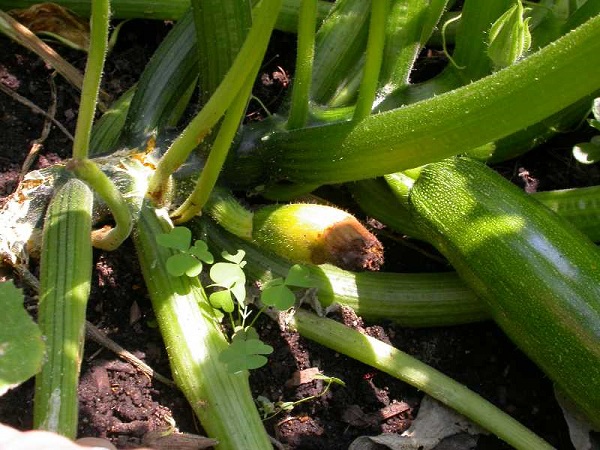
Treatment of seedlings from fusarium wilt
An insidious disease that initially affects the root and vascular system of the zucchini. In the active phase, the foci are transferred to the stem and leaves; it is not possible to save the escape in the advanced stage. The danger lies in the ability to quickly spread to neighboring bushes.
Upon detection of the first signs of the disease, powdered healthy plants should be powdered with wood ash.If the affected area has moved to the stem and leaves, it is impossible to do without biological treatment. One effective is trichodermin.
A large amount of organic fertilizers introduced into the soil to increase its fertility can provoke the development of fusarium. Therefore, it is recommended to combine organic matter with calcium-rich minerals. Fungal spores do not actively develop in a neutral environment.
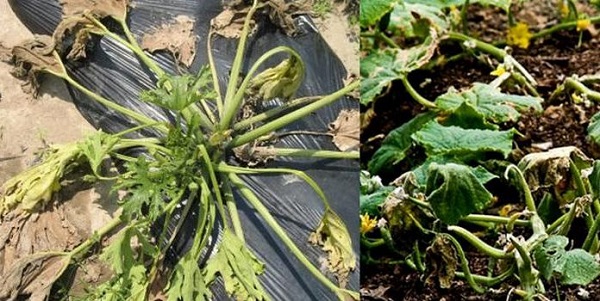
Mealy dew
A fungal disease that pulls micronutrients from a healthy plant, causing the plant to die. Characteristic features: white spots of a rounded shape on the leaves, sometimes on the stem. The resulting small islands eventually merge, covering the entire surface of the sheet.
Initially, the greens turn brown, then it dries and coagulates. The disease develops from spores, wintered in plant residues in the garden, or as a result of a deficiency in nitrogen fertilizers.
In order to prevent it, it is recommended to follow the schedule for the introduction of fertilizers and fertilizing, use decontaminated seeds, fight weeds.For extensive lesions, use special preparations: Fitosporin, Fitolavin, Gamair, and other means.
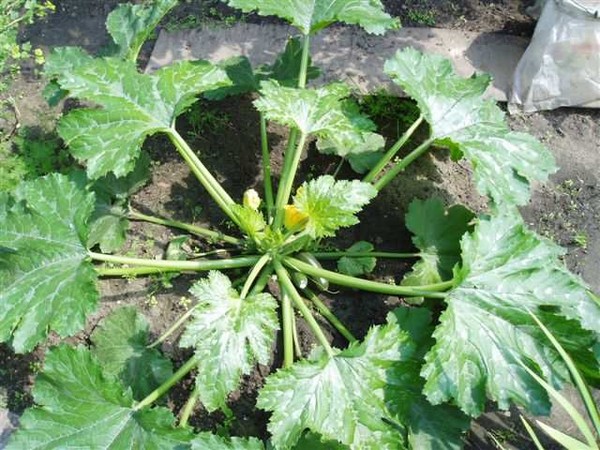
When leaves or peronosporiosis turn yellow
It affects the foliage of zucchini at all stages of plant development, while it begins to turn yellow and curl, yellow-green spots of angular or rounded shape are formed. On the reverse side can be seen a raid of gray or purple hue, which indicates sporulation of the fungus. In the running stage, the greenery dries out; only the stalks remain from the bush. In a warm and humid environment, peronosporiosis develops quite quickly, if signs are detected, the affected leaves should be removed from the zucchini. Do not interfere with the treatment of phyto preparations or infusion of onion peel.
White rot
Fungal disease affects all the organs of the zucchini, forming white patches. Fabrics become soft, become tight. The cause of the disease is the overmoistening of the soil and the thickening of the bed. The spores of the fungus are particularly active during the fruiting period of the crop, so the harvest may be at risk.
In order to prevent it is recommended to follow simple rules:
- annually change the area for planting;
- use decontaminated seeds;
- when landing to maintain the interval between the bushes;
- dust the soil with wood ash;
- regulate the amount of water for irrigation.
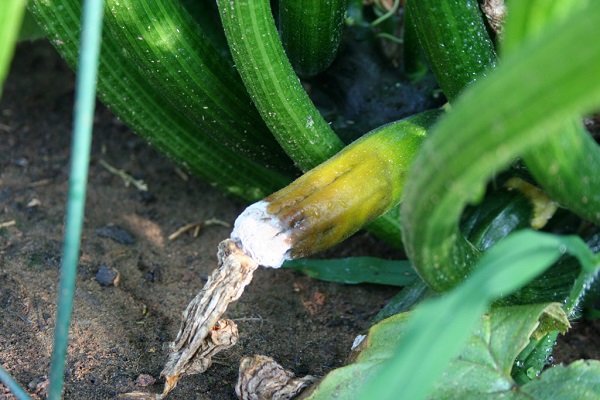
Brown Olive Spot
Fungal disease affecting the fruit, forming watery spots on them. After some time, zucchini deformed and rot. The hearth can go on the leaves, on which there are brown spots with a bright middle. The ideal environment for the development of the fungus is cool rainy weather. If a problem is found, it is recommended to treat the beds with biofungicides. After harvesting it is necessary to carefully remove all plant residues and disinfect the soil with special solutions.
Viral diseases
Green speckled and white mosaics are extremely dangerous due to incurability. So that the virus does not hit the harvest of the new season, the soil is replaced in the garden, and plant residues are utilized by burning.
Characteristic features of the mosaic: the appearance of yellow-green spots on the young leaves of the zucchini, followed by wrinkling. Fruits have warts and various deformities. At a late stage, the entire surface of the vegetable is covered with splashes. White mosaic is recognized by whitish spots on the leaves in the form of stars.
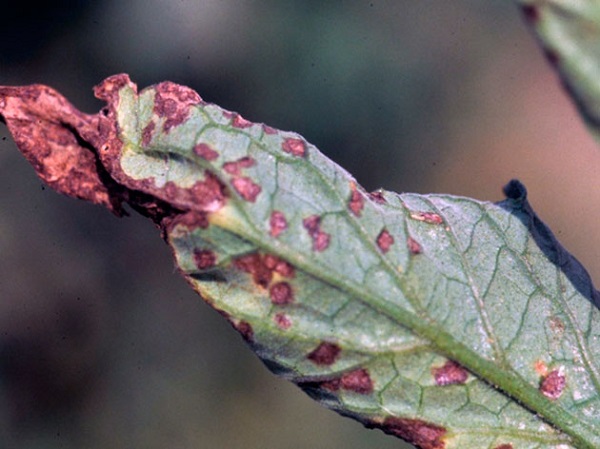
Protection against diseases and pests
Agronomy zucchini includes preventive measures that significantly reduce the risk of infecting plants with various diseases. Among the main ones:
- the use of decontaminated seed;
- thorough cleaning of the garden at the end of the season;
- processing of the plot for planting vegetables (with a solution of potassium permanganate, boiling water and other means);
- compliance with the landing pattern to prevent thickening of the rows;
- timely weeding;
- regular watering;
- periodic inspection of the bushes;
- compliance with the rules of crop rotation.
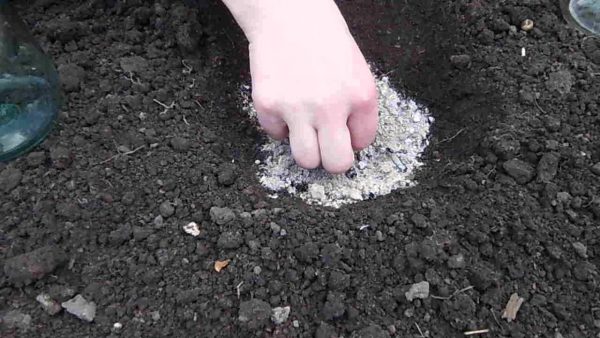
Disease prevention is also considered the proper preparation of the soil for sowing. It must be enriched with nutrients (humus, peat, wood ash, compost, etc.). If the structure of the soil is dense, you need to enter a little sawdust, peat or rotted manure. This will make it easier, which will allow the root system to develop normally.
With the proper farming practices and the prevention of diseases, harvest of zucchini can be harvested until very cold.
